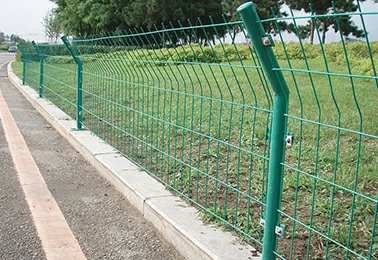 TEL:
+86-13102802206
TEL:
+86-13102802206
 Email:
fencenetting@china.com
Email:
fencenetting@china.com
 Language
Language
 TEL:
+86-13102802206
TEL:
+86-13102802206
 Email:
fencenetting@china.com
Email:
fencenetting@china.com
 Language
Language


Understanding Gabion Wall Fences A Modern Solution for Aesthetic and Functional Needs
Gabion wall fences have gained popularity in recent years as both an attractive and functional solution for various landscaping and construction projects. Comprising wire mesh cages filled with stones, gravel, or other materials, gabion walls offer a versatile approach to boundary marking, retaining walls, and erosion control. Their combination of natural aesthetics and robustness makes them an appealing choice for homeowners, architects, and engineers alike.
Aesthetic Appeal and Versatility
One of the most significant advantages of gabion walls is their ability to blend seamlessly with the natural environment. Available in various sizes and styles, these structures can be customized to fit different landscapes and architectural designs. The natural stone materials used in gabion cages provide a rustic charm, making them ideal for gardens, parks, and other outdoor spaces. Homeowners looking to create a beautiful outdoor retreat can incorporate gabion walls into their designs to create unique features, such as seating areas, raised flower beds, or privacy screens.
Moreover, the versatility of gabion walls allows them to be used in various settings. Whether for residential properties, commercial developments, or public works, they can serve multiple purposes—ranging from functional barriers and noise reduction walls to decorative landscape features. Their adaptability makes them a popular choice for both urban and rural environments.
Durability and Low Maintenance

Gabion wall fences are highly durable due to the materials used in their construction. The wire mesh is typically made of galvanized steel or stainless steel, which provides excellent resistance to rust and corrosion. The stones or gravel inside the cages can withstand harsh weather conditions, making gabion walls a long-lasting solution. Unlike traditional wooden fences that may rot, warp, or need frequent painting, gabion walls require minimal maintenance, allowing homeowners to enjoy their beauty and functionality without constant upkeep.
Erosion Control and Environmental Benefits
In addition to their aesthetic and structural advantages, gabion walls play a crucial role in erosion control and environmental conservation. By stabilizing soil and preventing erosion on slopes, they help maintain the integrity of the landscape. The permeable nature of gabion walls allows water to flow through, reducing runoff and promoting natural drainage. This feature can help protect surrounding ecosystems by minimizing sediment displacement and promoting healthy soil retention.
Furthermore, gabions can provide a habitat for wildlife. The spaces between the stones become homes for small animals and insects, fostering biodiversity in the area. As such, integrating gabion walls into landscaping can enhance not only the visual appeal but also the ecological value of a property.
Conclusion
Gabion wall fences represent a contemporary option that seamlessly blends durability, aesthetic appeal, and environmental functionality. Whether used for practical purposes like erosion control or as decorative elements in landscape design, these structures offer a versatile and sustainable solution. As more homeowners and designers recognize the benefits of gabion walls, their popularity is likely to continue growing, marking a shift toward environmentally conscious and visually appealing construction practices.